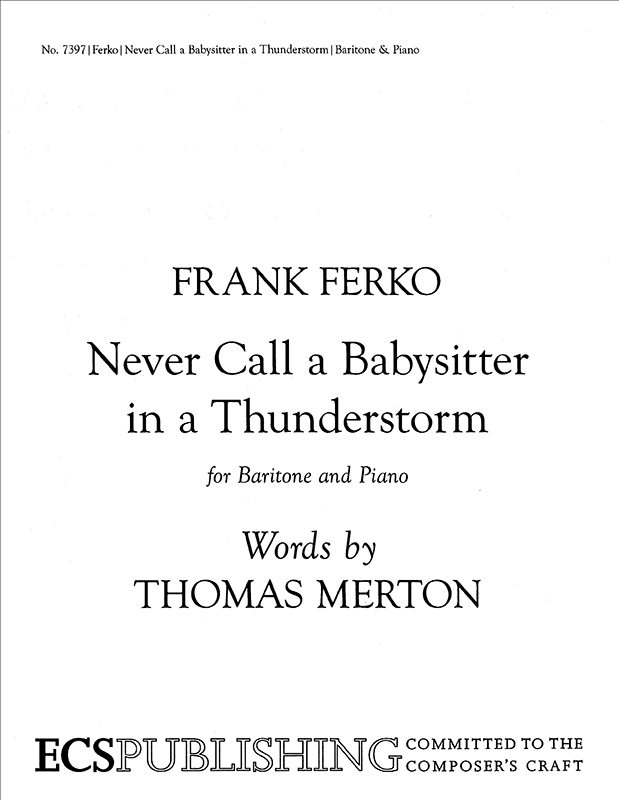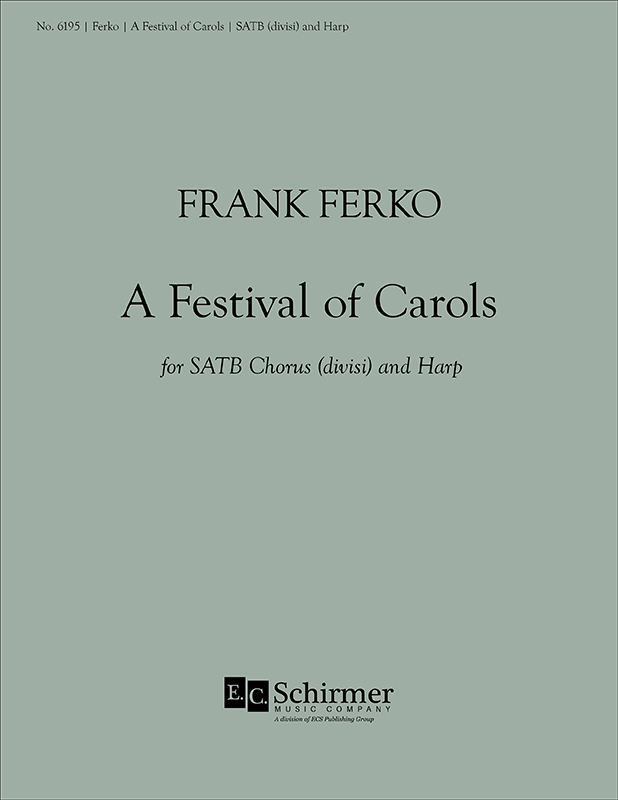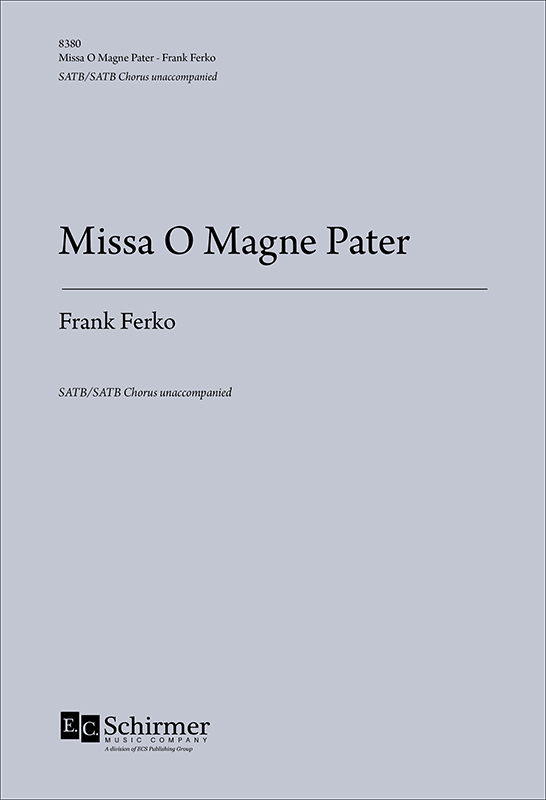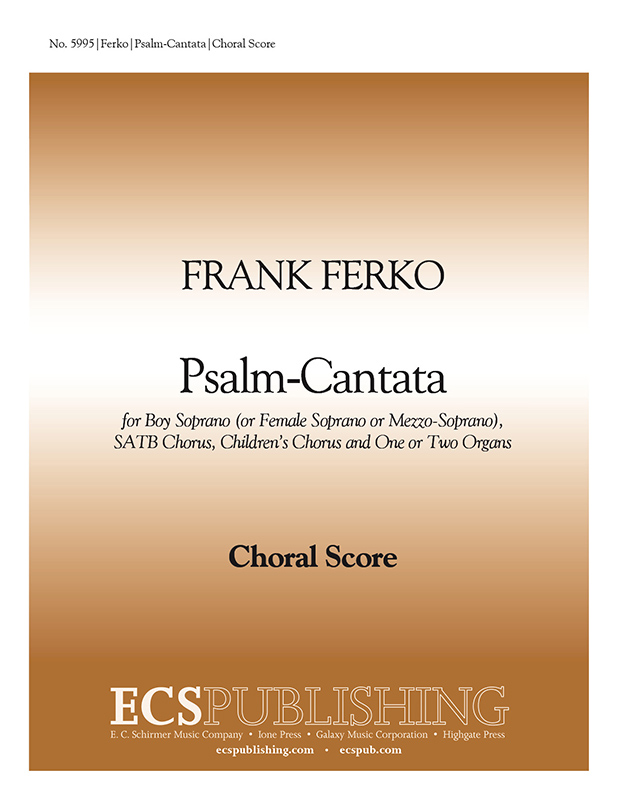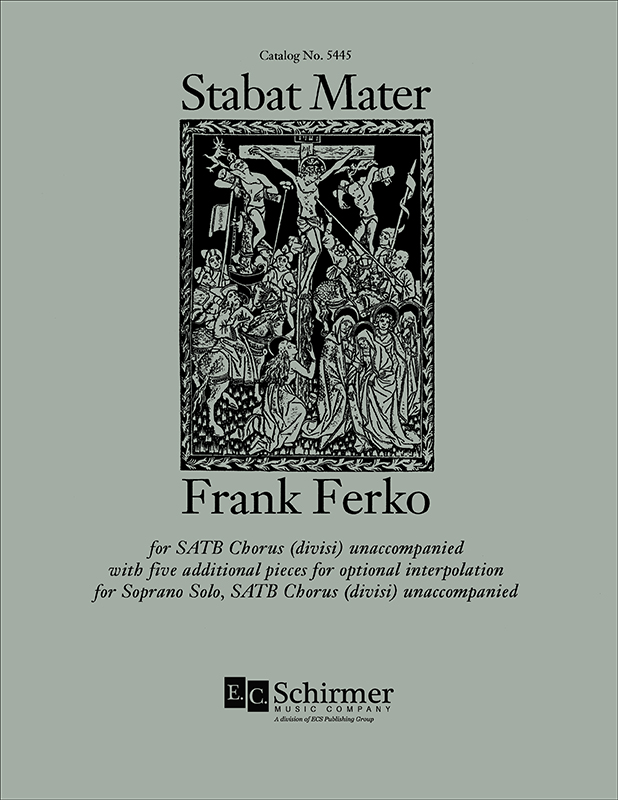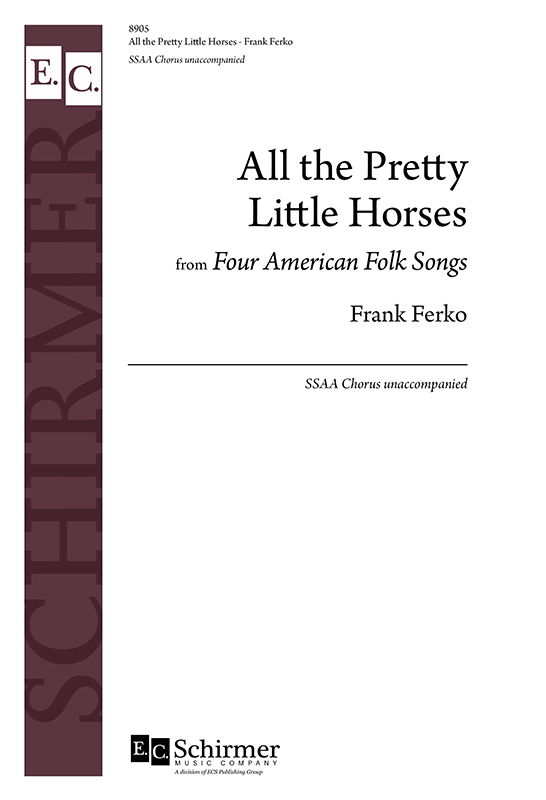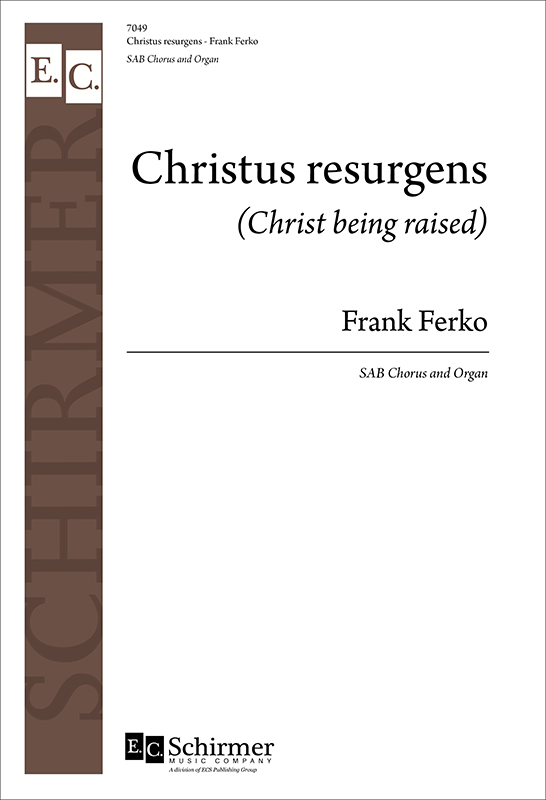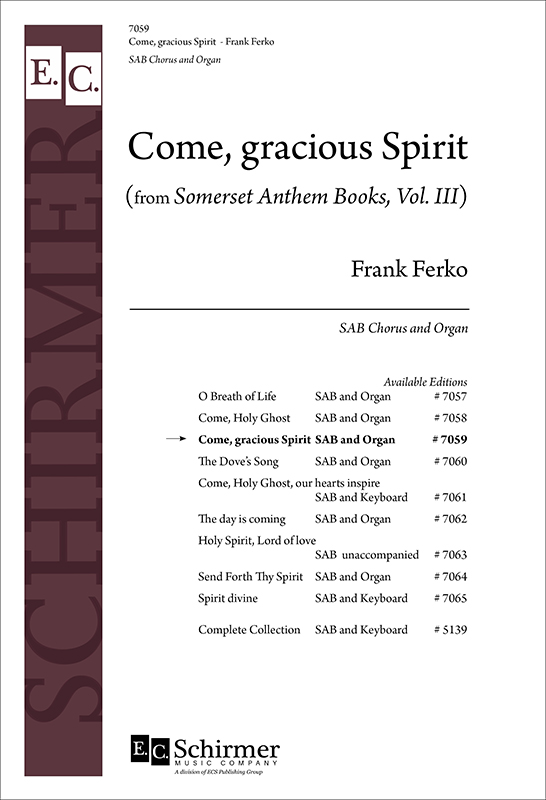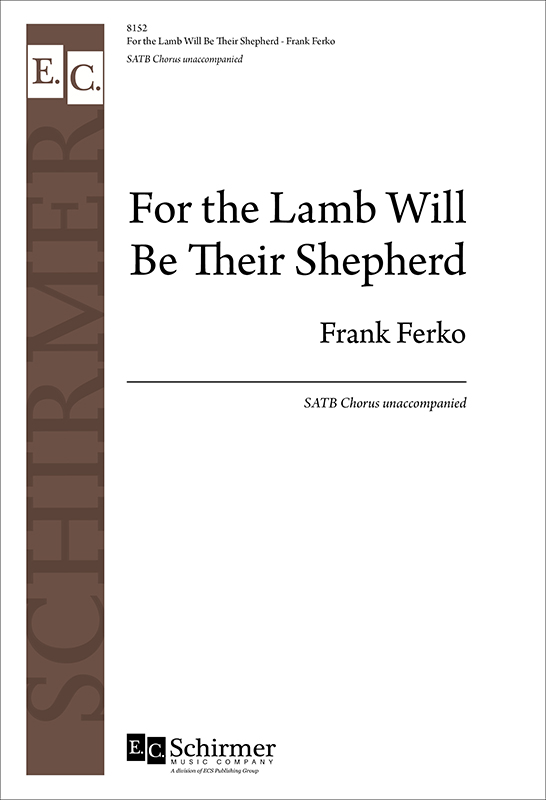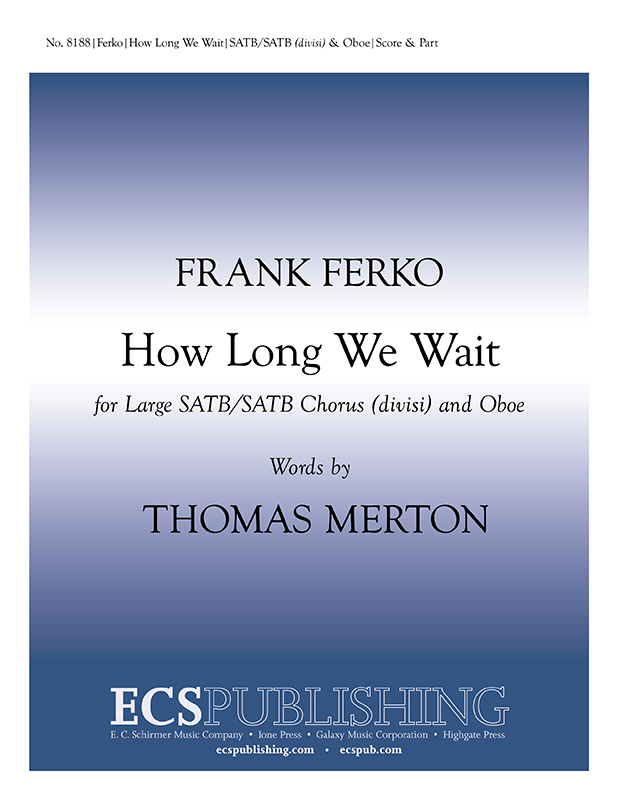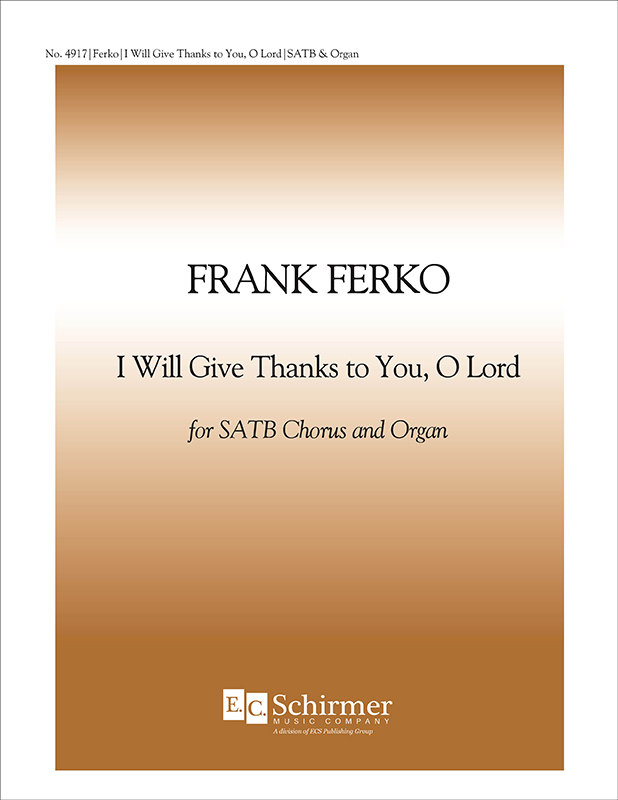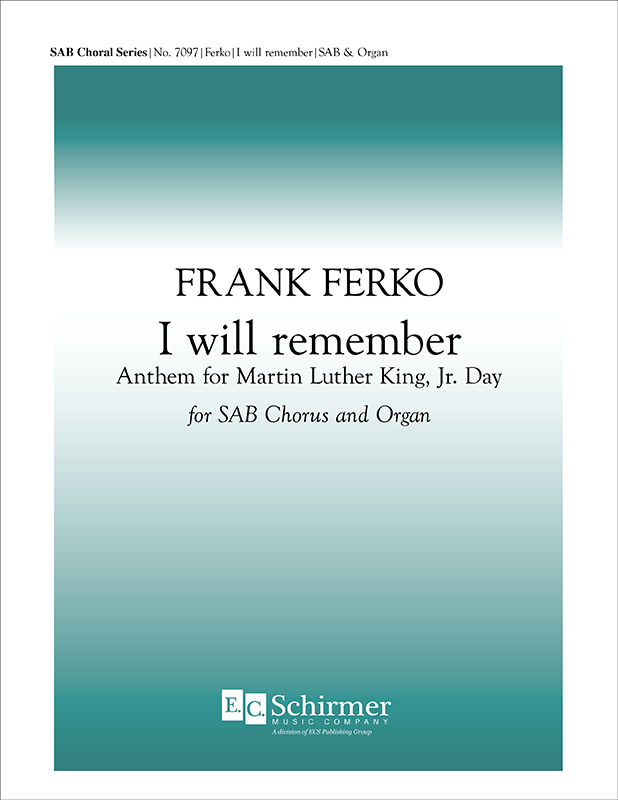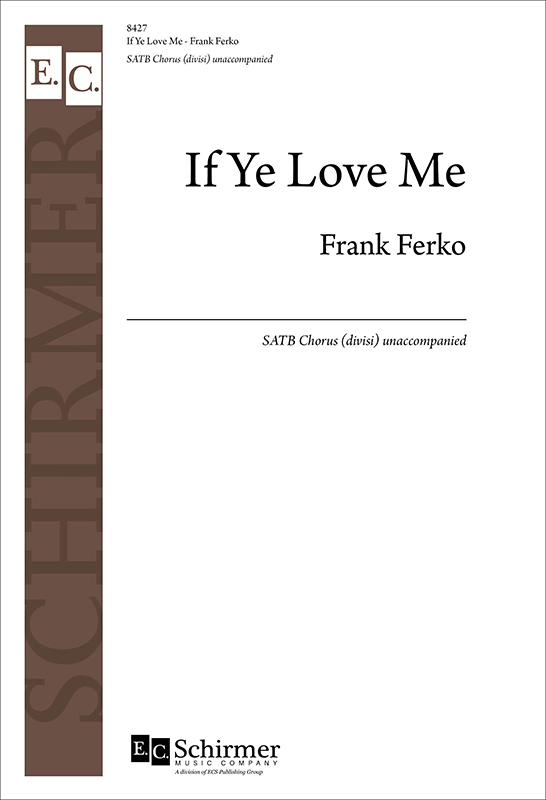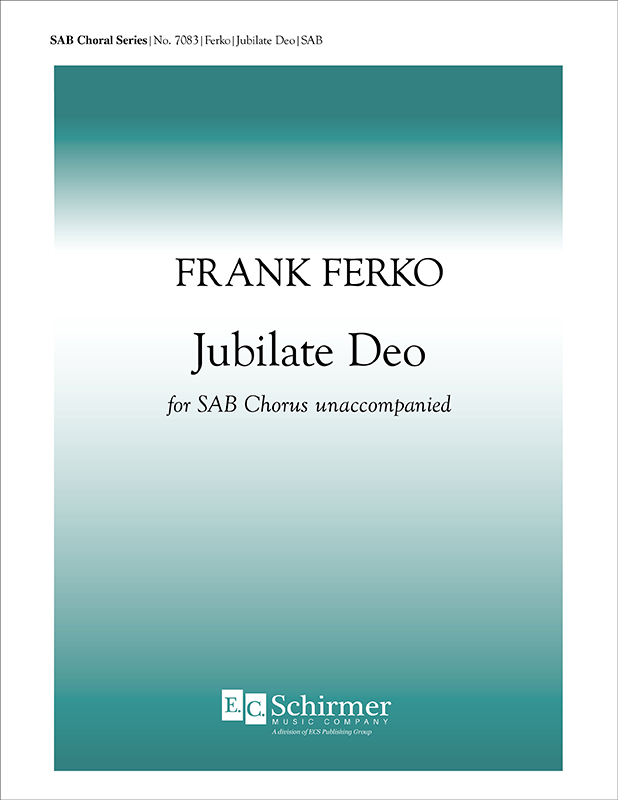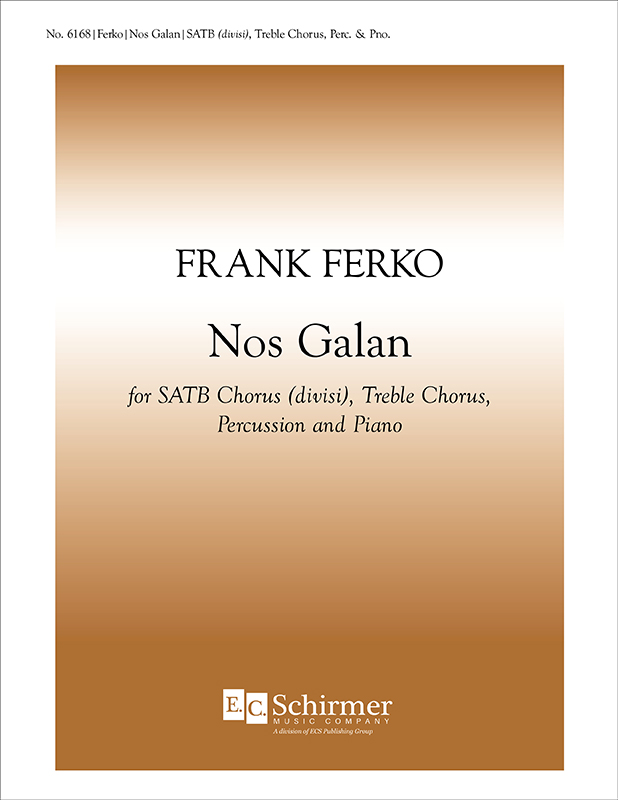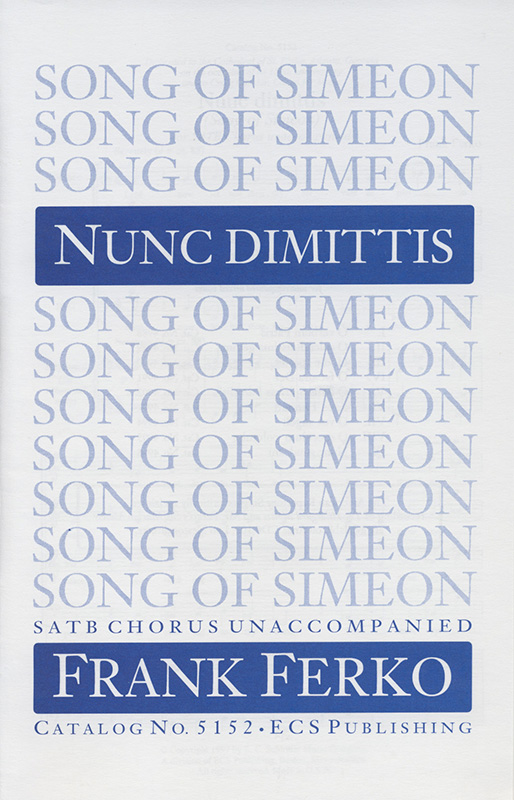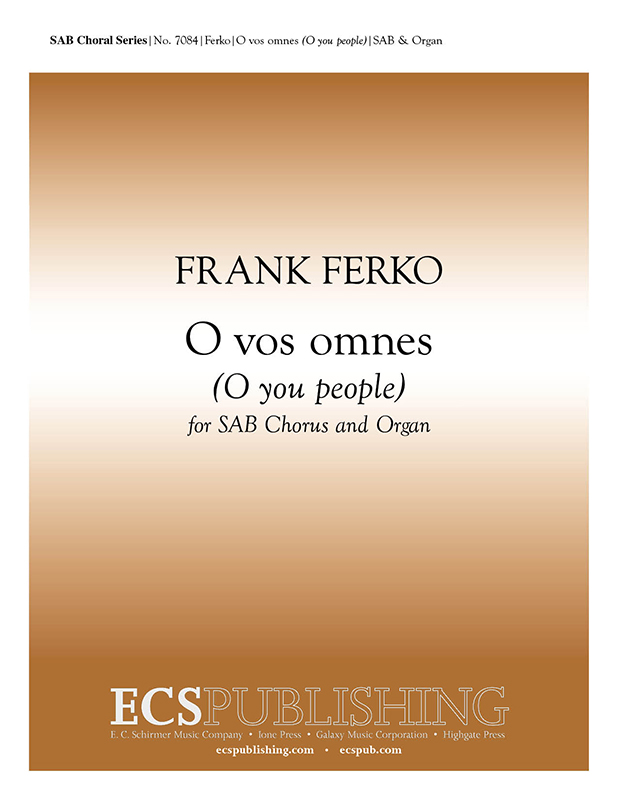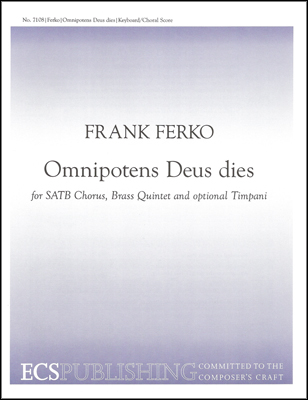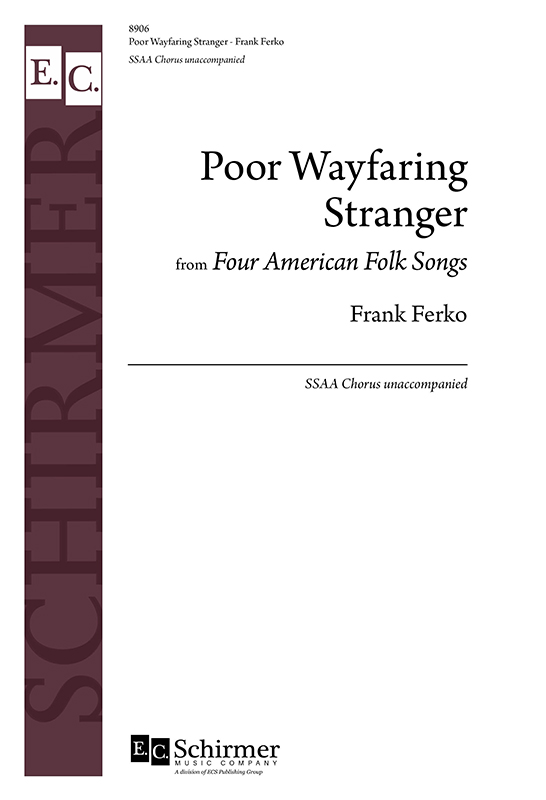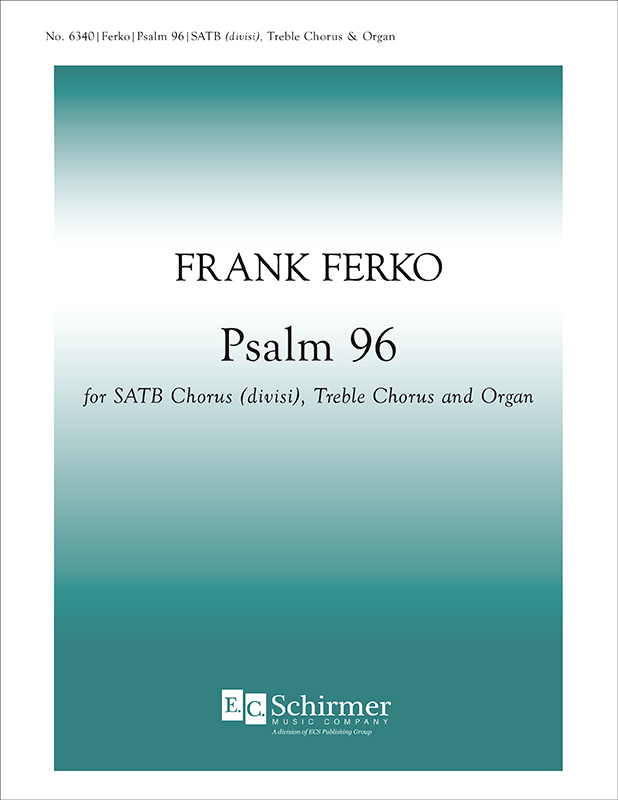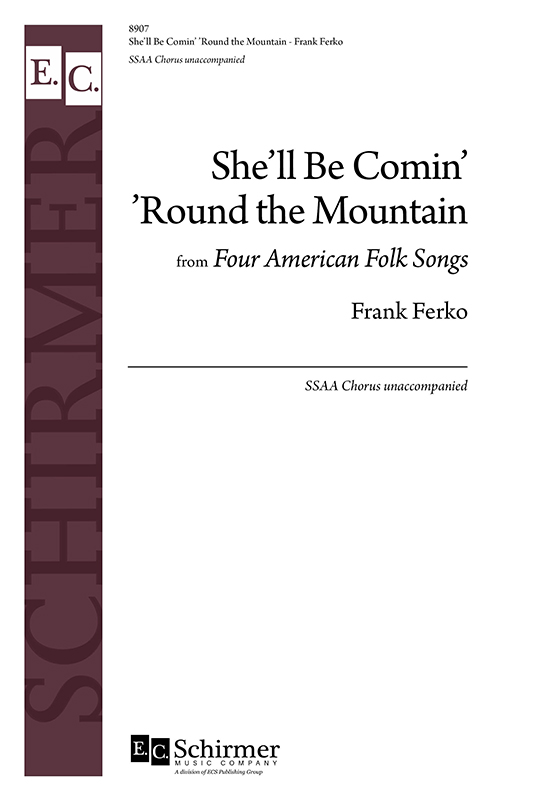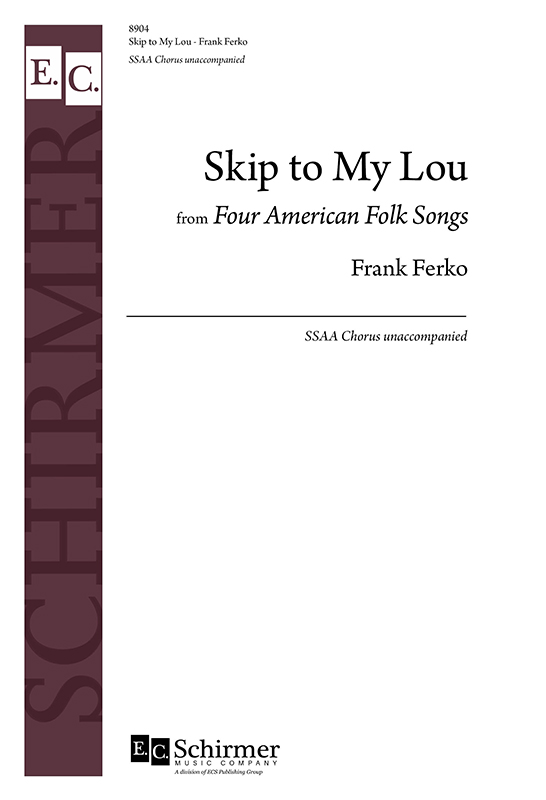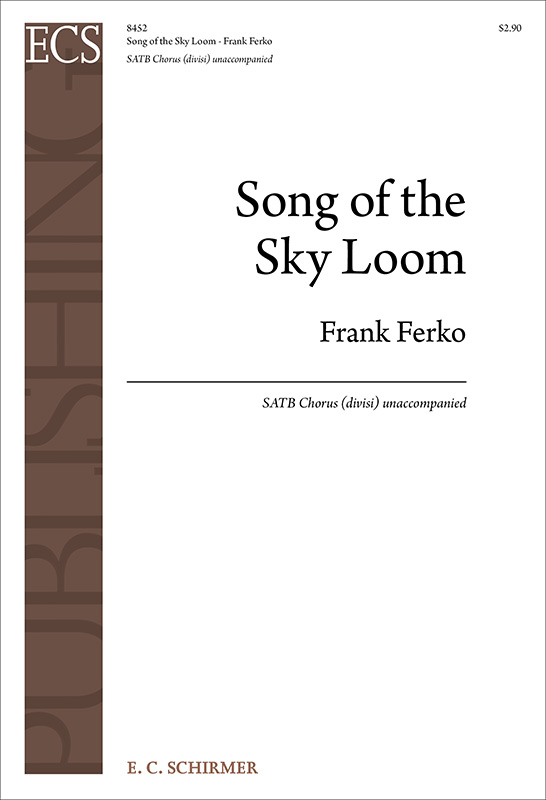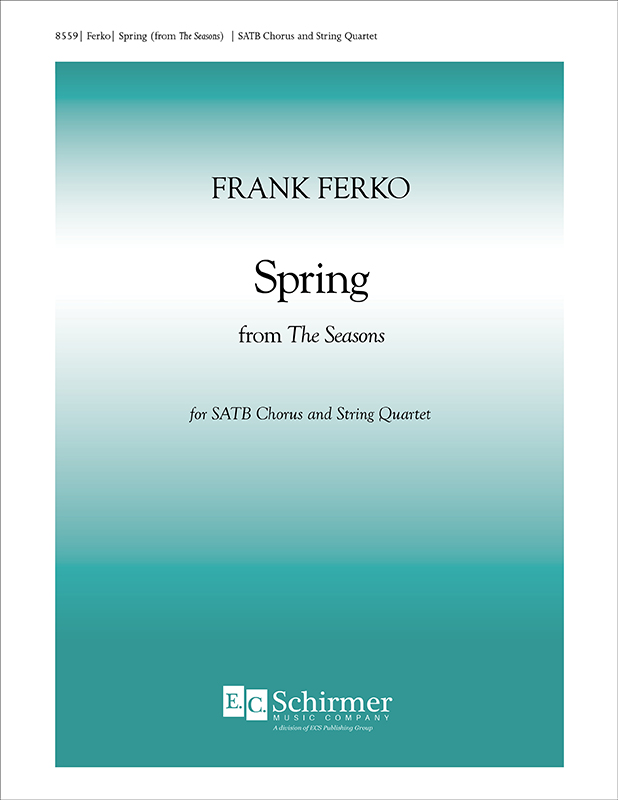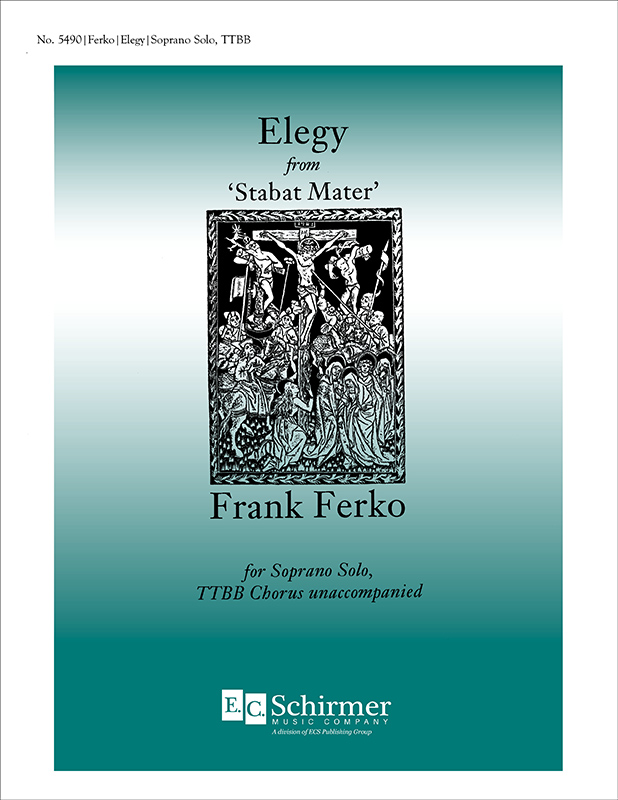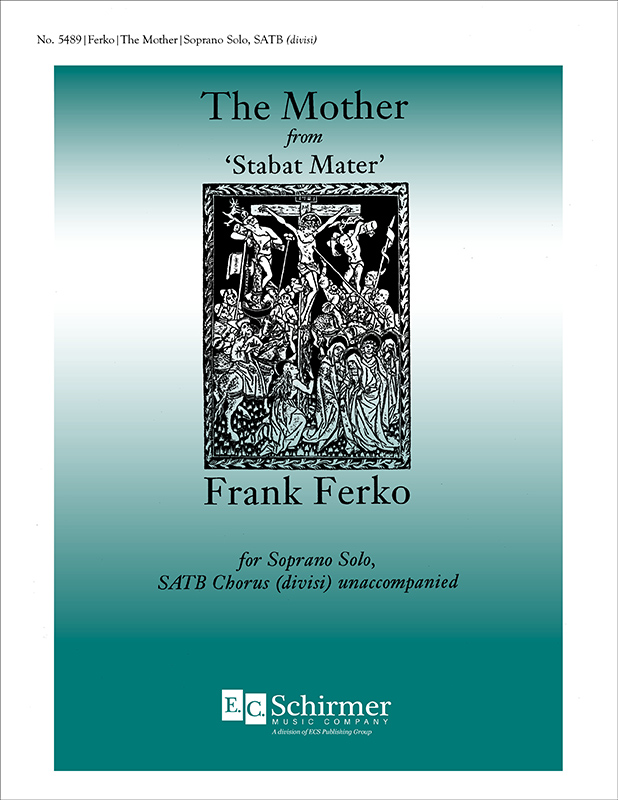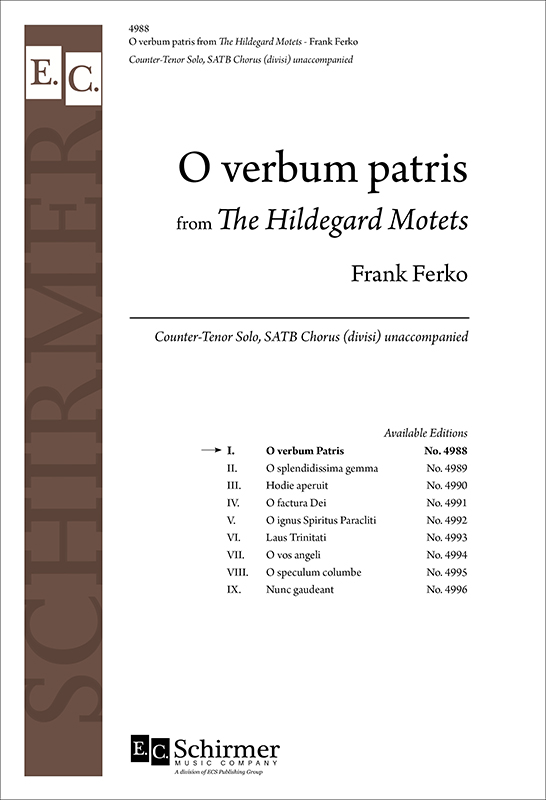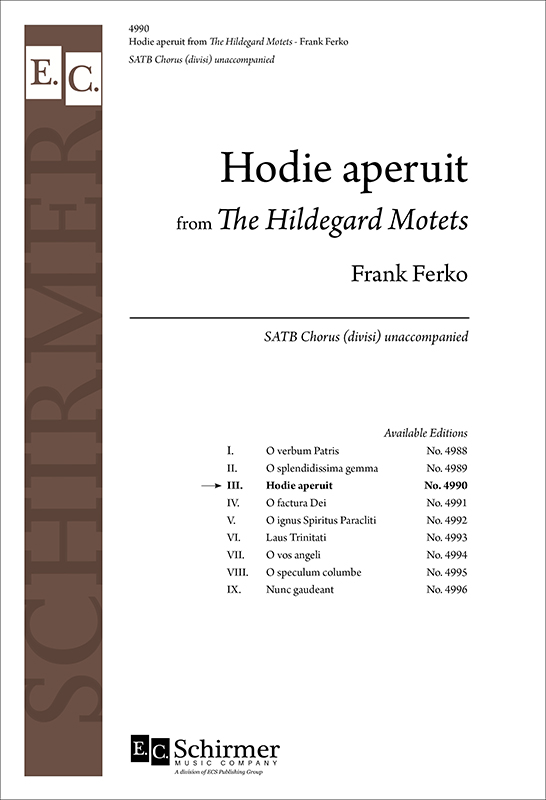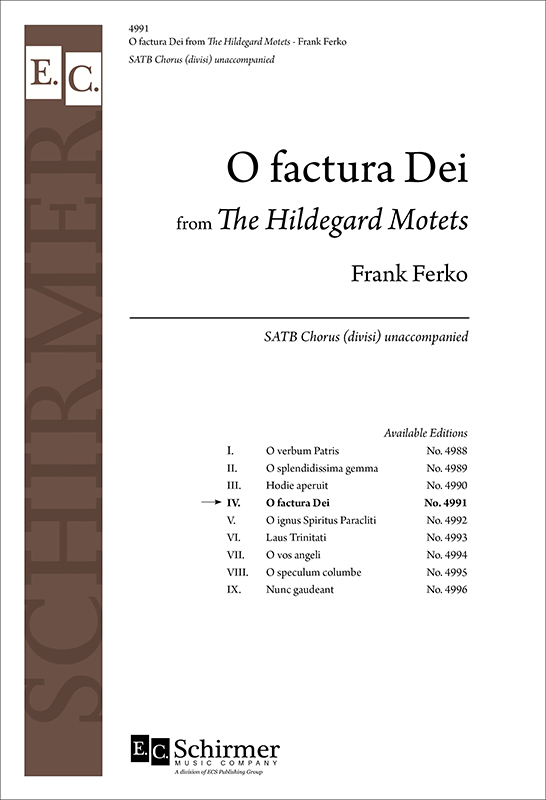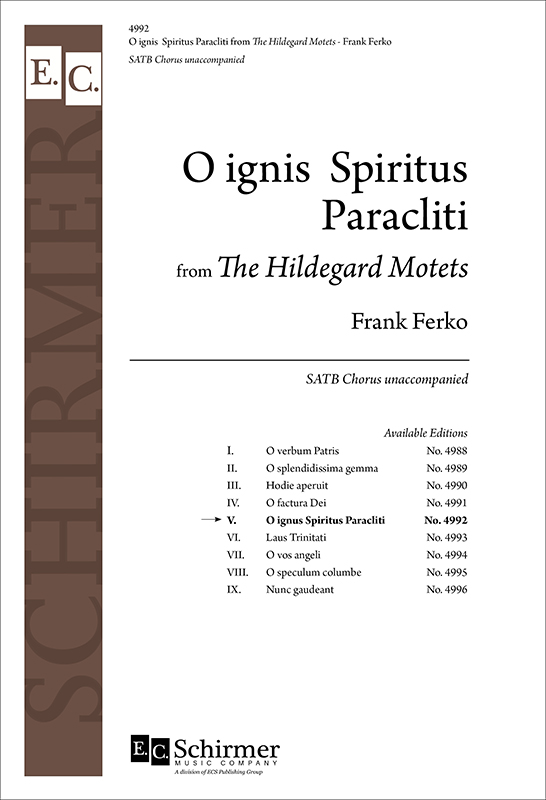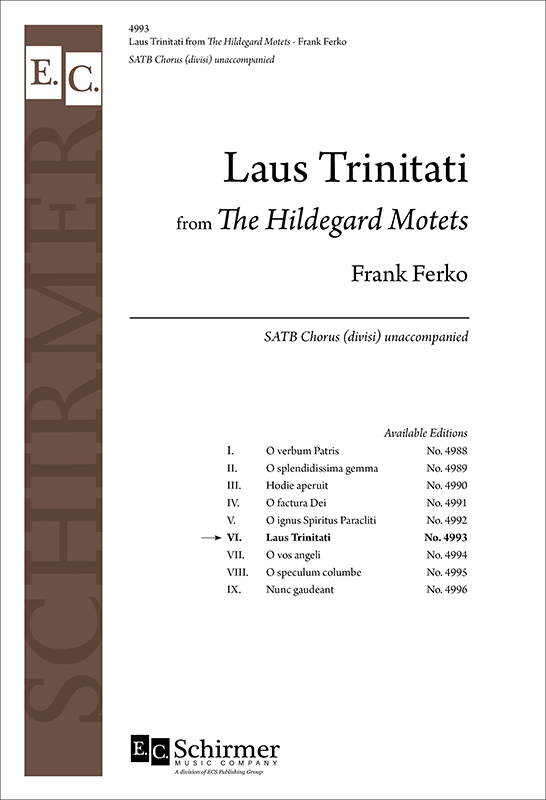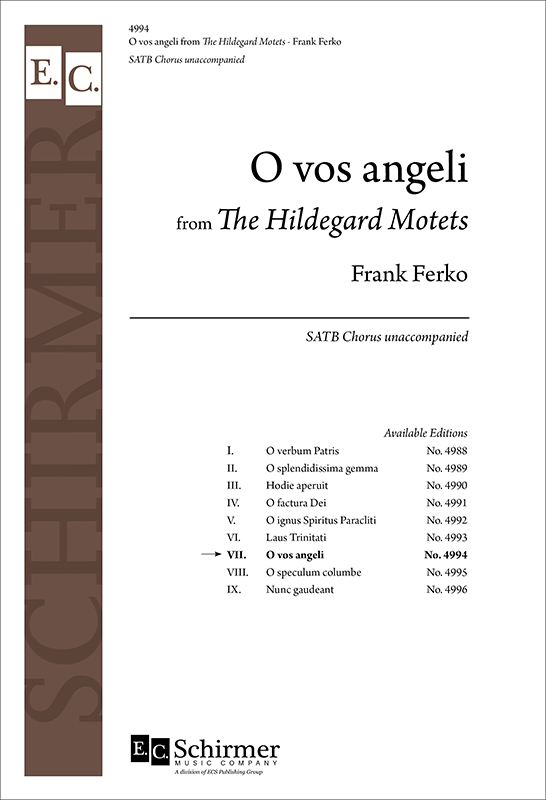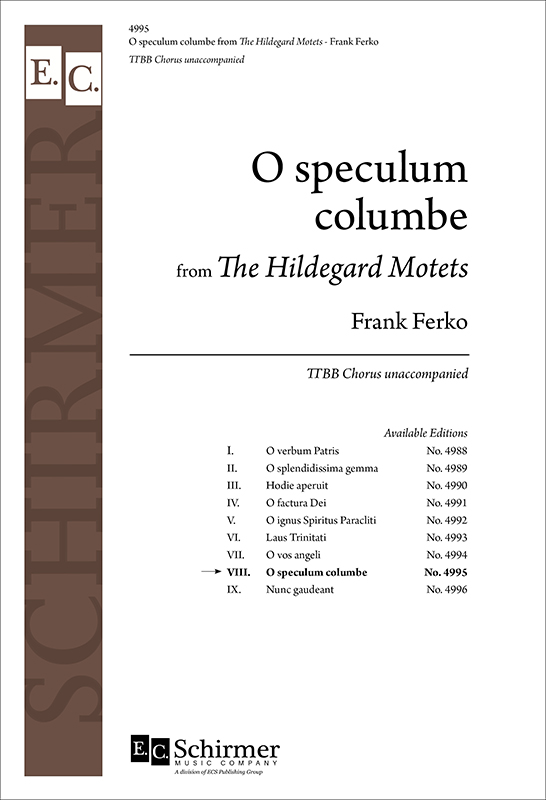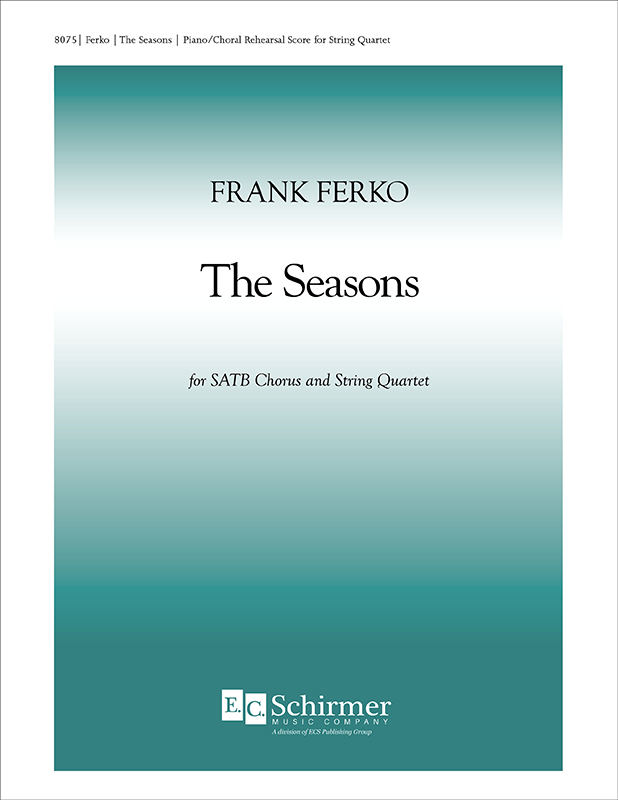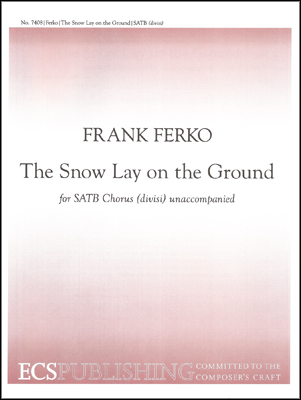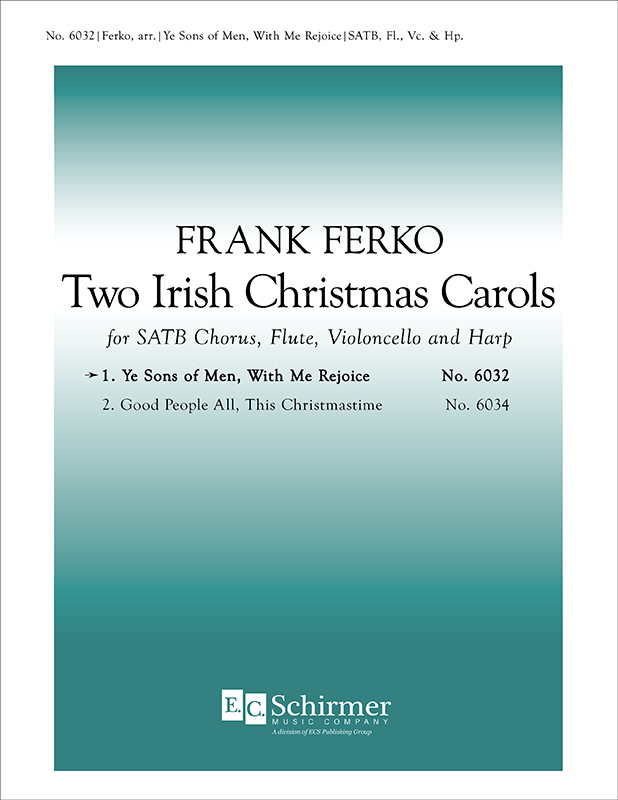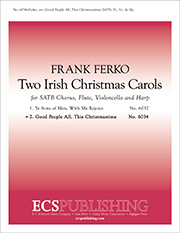In Celebration of the Human Voice - The Essential Musical Instrument
Home | Doo Wop | Barbershop | World | Contemporary | Christian | Vocal Jazz | Choral | Christmas | Instructional | Arrangements
Classical | Opera | Musicals | Personality | Young Singers | Disney | Videos | Songs | The Artists

Frank Ferko

The music of Frank Ferko has been heard in live performances and radio broadcasts around the world. Hailed by critics as a master of text setting and composing for a cappella vocal ensembles, Mr. Ferko is one of the most sought after composers of new choral music today, and his works have been performed by some of the most highly regarded choral ensembles and vocal soloists of our time. From 2001 to 2003 Frank Ferko held the position of Composer-in-Residence with the Dale Warland Singers, long regarded as one of America's finest a cappella choirs, and his awards include an ASCAP award nearly every year from 1989 to 2019, as well as awards from Meet the Composer, American Composers Forum, American Music Center, Arts International and the American Guild of Organists. Four times he received the Individual Artist's Fellowship from the Illinois Arts Council, and in 2003, 2005 and 2006 the Illinois Arts Council awarded him the Governor's International Travel Exchange Grant for presentations of his music in The Netherlands and Ireland. |
Arrangements | Recordings
Songbooks, Arrangements and/or Media
Displaying 1-5 of 5 items.
Frank Ferko : Never call a babysitter in a thunderstorm Ferko writes, "'Never Call a Babysitter in a Thunderstorm' demonstrates Merton's unique ability to amuse Frank Ferko : A Festival of Carols "A Festival of Carols for mixed chorus and harp is based on five Christmas carol texts by 19th century American poets and hymn writers. Although it was my intention to use earlier American texts, I found that most Christmas carols sung in America prior to the 19th century were carols brought to this country by immigrants from their homelands in Europe. Thus, many of the early carols sung here did not originate in this country. The 19th century, however, did produce an abundance of new texts by American writers, and these were also set to music by American composers. Some of these carols have become quite well-known while others have remained relatively obscure. In the present work all of the music is new whether or not the texts are familiar. Thus, the carols herein are not arrangements of previously existing tunes but entirely new melodies and harmonizations with the harp used both as an accompanying instrument and as an intrinsic thread within the larger musical fabric." -Frank Ferko Frank Ferko : Missa O Magne Pater Based on the chant O Magne Pater, composed in the 12th century by Hildegard von Bingen (1098-1179). Several excerpts from the chant were used to provide thematic material for the Mass, with different chant fragments used in each of its five sections. The Mass was composed between February and October of 2014. -Frank Ferko |
Displaying 1-39 of 39 items.
Commissioned by Christopher Watson, conductor of the Trinity College Choir, Melbourne, for the ensemble's U.S. concert tour in 2020. This minor-mode lullaby is set in close harmonies which amplify its dual nature: sometimes soothing, sometimes a bit ominous.
"For the Lamb Will Be Their Shepherd" was commissioned to be performed as a companion piece to Bach's Cantata 112 (based on Psalm 23). The motet was first performed at a Bach Cantata Vesper Service at St. James Lutheran Church, Portland, Oregon by the St. James Bach Choir conducted by Nancy LeRoi Nickel. The text is the NIV translation of Rev. 7:17 and is set for unaccompanied SATB choir. Based on Renaissance motet models, this motet begins with the entire text sung to an originally composed chant melody which then becomes the basis for the rest of the work. The chant melody is repeated in long note values, as a cantus firmus, sung alternately by the tenors and the sopranos, while the other voices provide exuberant counterpoint. The duration of the motet is approximately 3'45".
This work was composed for a large choral ensemble of approximately 90 voices with the capability of dividing into two choirs. The division that actually does occur in this piece is an "internal" division rather than an "external" one. Therefore, it is not necessary for the singers to be physically divided into two separate groups with a space between them, but rather, the singers may remain in their usual arrangement in the chorus and sing the double chorus section with the effect of an internal, reflective type of sound rather than the more commonly used antiphonal sound with a spatial effect created by physical separation of the two choruses. Based on a poem by Thomas Merton, the text speaks of the anticipation of events yet to be fulfilled. In more specific terms, the poem is an Advent poem which heralds of the birth of Jesus through the use of texts from biblical arables and from other Gospel narratives combined with images of everyday experiences, such as church bells, birds, wat
If Ye Love Me was composed as a reflective commentary on the well-known motet by Thomas Tallis (1505-1585). Homophony predominates in the first section but with clusters rather than the traditional harmonies used by Tallis. At approximately the midpoint of the piece, the texture is reduced to a very simple four-voice contrapuntal texture as a brief reference to Tallis' style. The chorus then divides into two groups with one group continuing the counterpoint which is now expanded into a more active and complex style. The second group of voices returns to the homophonic style, but now in widely expanded harmonies. Thus, the motet concludes with homophony and counterpoint sounding simultaneously. Duration: 2:00
Commissioned by Christopher Watson, conductor of the Trinity College Choir, Melbourne, for the ensemble's U.S. concert tour in 2020. The textures vary from spare to lush, reflecting the pathos of this mournful folk song.
Commissioned by Christopher Watson, conductor of the Trinity College Choir, Melbourne, for the ensemble's U.S. concert tour in 2020. With its swinging rhythms and laughing motif throughout, this is a fitting conclusion to Ferko's set of four American folk songs. Eschewing weightier interpretations of the text, this setting is pure fun.
Commissioned by Christopher Watson, conductor of the Trinity College Choir, Melbourne, for the ensemble's U.S. concert tour in 2020. This setting is a brisk one, with coy syncopation and lots of interplay. The tune itself is even inverted at one point. Not easy but the fun makes up for it.
"In the summer of 2011, while I was visiting my friends Don and Sally Roberts in Santa Fe, Sally asked me if I would be interested in writing a new choral work for Don in celebration of his upcoming 75th birthday. The idea appealed to me very much, so I readily agreed to write the piece. Since Don has enjoyed a lifelong interest in the American Southwest Pueblo people and their customs, Sally provided me with several Tewa texts, in English translation, to consider for musical setting. I was particularly drawn to the imagery of Song of the Sky Loom, so that poem became the basis for the new work.
The music begins with two baritone soloists singing an introductory 'call-and-response' to which the entire chorus eventually responds. The opening line of text is first presented in fragmented form, as if voices from all areas of nature gradually rise up and then merge into a unified chordal texture. As the text turns to the imagery of weaving, the musical texture, accordingly, bec
The Seasons was commissioned by the South Bend Chamber Singers, Nancy Menk, conductor, and first performed on March 3, 2013 by the South Bend Chamber Singers with the Euclid Quartet in a concert devoted to music about the weather. The texts for this work were selected by the composer, and they represent three different time periods, the 17th, 19th and early 20th centuries, to show that writers have long been fascinated by the seasons and by the distinct weather conditions that each season brings. Although certain types of weather, such as wind or rain, may occur in any of the seasons, the descriptions of weather in these four poems present specific weather conditions which commonly occur in each of the four seasons: a still, hot, sultry day interrupted by the movement of a light breeze from the hills (summer); the cooling morning mists and light frost which signal the coming of winter (autumn); the bitter iciness of fierce winds and frozen air-in this poem, further compared with man's
The Hildegard Motets comprise a cycle of nine unaccompanied choral motets using texts by the 12th century abbess Hildegard von Bingen (1098-1179). The texts were extracted from Hildegard's opus of more than seventy sacred poems titled Symphinia armonie celestium revelationum. Although these poems have been translated into English (more than once) and some of the translations are quite brilliant, I chose to set the original Latin texts as I felt they remained closer to Hildegard's own thoughts. The nine poems used in this cycle were selected according to their appropriateness to seasons in the Christian liturgical caldendar (thus, most of them can be sung in specific liturgical settings) and to their appropriateness to the structured plan of this cycle as well as for their sheer poetic beauty. Hildegard's poetic vocabulary was unusual and unique; she frequently used language that is not found in standard Latin liturgical texts. As with the music sh
Composer: Hildegard von Bingen
The Hildegard Motets comprise a cycle of nine unaccompanied choral motets using texts by the 12th century abbess Hildegard von Bingen (1098-1179). The texts were extracted from Hildegard's opus of more than seventy sacred poems titled Symphinia armonie celestium revelationum. Although these poems have been translated into English (more than once) and some of the translations are quite brilliant, I chose to set the original Latin texts as I felt they remained closer to Hildegard's own thoughts. The nine poems used in this cycle were selected according to their appropriateness to seasons in the Christian liturgical caldendar (thus, most of them can be sung in specific liturgical settings) and to their appropriateness to the structured plan of this cycle as well as for their sheer poetic beauty. Hildegard's poetic vocabulary was unusual and unique; she frequently used language that is not found in standard Latin liturgical texts. As with the musi
Composer: Hildegard von Bingen
The Hildegard Motets comprise a cycle of nine unaccompanied choral motets using texts by the 12th century abbess Hildegard von Bingen (1098-1179). The texts were extracted from Hildegard's opus of more than seventy sacred poems titled Symphinia armonie celestium revelationum. Although these poems have been translated into English (more than once) and some of the translations are quite brilliant, I chose to set the original Latin texts as I felt they remained closer to Hildegard's own thoughts. The nine poems used in this cycle were selected according to their appropriateness to seasons in the Christian liturgical caldendar (thus, most of them can be sung in specific liturgical settings) and to their appropriateness to the structured plan of this cycle as well as for their sheer poetic beauty. Hildegard's poetic vocabulary was unusual and unique; she frequently used language that is not found in standard Latin liturgical texts. As with the musi
Composer: Hildegard von Bingen
The Hildegard Motets comprise a cycle of nine unaccompanied choral motets using texts by the 12th century abbess Hildegard von Bingen (1098-1179). The texts were extracted from Hildegard's opus of more than seventy sacred poems titled Symphinia armonie celestium revelationum. Although these poems have been translated into English (more than once) and some of the translations are quite brilliant, I chose to set the original Latin texts as I felt they remained closer to Hildegard's own thoughts. The nine poems used in this cycle were selected according to their appropriateness to seasons in the Christian liturgical caldendar (thus, most of them can be sung in specific liturgical settings) and to their appropriateness to the structured plan of this cycle as well as for their sheer poetic beauty. Hildegard's poetic vocabulary was unusual and unique; she frequently used language that is not found in standard Latin liturgical texts. As with the musi
Composer: Hildegard von Bingen
The Hildegard Motets comprise a cycle of nine unaccompanied choral motets using texts by the 12th century abbess Hildegard von Bingen (1098-1179). The texts were extracted from Hildegard's opus of more than seventy sacred poems titled Symphinia armonie celestium revelationum. Although these poems have been translated into English (more than once) and some of the translations are quite brilliant, I chose to set the original Latin texts as I felt they remained closer to Hildegard's own thoughts. The nine poems used in this cycle were selected according to their appropriateness to seasons in the Christian liturgical caldendar (thus, most of them can be sung in specific liturgical settings) and to their appropriateness to the structured plan of this cycle as well as for their sheer poetic beauty. Hildegard's poetic vocabulary was unusual and unique; she frequently used language that is not found in standard Latin liturgical texts. As with the musi
Composer: Hildegard von Bingen
The Hildegard Motets comprise a cycle of nine unaccompanied choral motets using texts by the 12th century abbess Hildegard von Bingen (1098-1179). The texts were extracted from Hildegard's opus of more than seventy sacred poems titled Symphinia armonie celestium revelationum. Although these poems have been translated into English (more than once) and some of the translations are quite brilliant, I chose to set the original Latin texts as I felt they remained closer to Hildegard's own thoughts. The nine poems used in this cycle were selected according to their appropriateness to seasons in the Christian liturgical caldendar (thus, most of them can be sung in specific liturgical settings) and to their appropriateness to the structured plan of this cycle as well as for their sheer poetic beauty. Hildegard's poetic vocabulary was unusual and unique; she frequently used language that is not found in standard Latin liturgical texts. As with the musi
Composer: Hildegard von Bingen
The Hildegard Motets comprise a cycle of nine unaccompanied choral motets using texts by the 12th century abbess Hildegard von Bingen (1098-1179). The texts were extracted from Hildegard's opus of more than seventy sacred poems titled Symphinia armonie celestium revelationum. Although these poems have been translated into English (more than once) and some of the translations are quite brilliant, I chose to set the original Latin texts as I felt they remained closer to Hildegard's own thoughts. The nine poems used in this cycle were selected according to their appropriateness to seasons in the Christian liturgical caldendar (thus, most of them can be sung in specific liturgical settings) and to their appropriateness to the structured plan of this cycle as well as for their sheer poetic beauty. Hildegard's poetic vocabulary was unusual and unique; she frequently used language that is not found in standard Latin liturgical texts. As with the musi
Composer: Hildegard von Bingen
The Hildegard Motets comprise a cycle of nine unaccompanied choral motets using texts by the 12th century abbess Hildegard von Bingen (1098-1179). The texts were extracted from Hildegard's opus of more than seventy sacred poems titled Symphinia armonie celestium revelationum. Although these poems have been translated into English (more than once) and some of the translations are quite brilliant, I chose to set the original Latin texts as I felt they remained closer to Hildegard's own thoughts. The nine poems used in this cycle were selected according to their appropriateness to seasons in the Christian liturgical caldendar (thus, most of them can be sung in specific liturgical settings) and to their appropriateness to the structured plan of this cycle as well as for their sheer poetic beauty. Hildegard's poetic vocabulary was unusual and unique; she frequently used language that is not found in standard Latin liturgical texts. As with the musi
Composer: Hildegard von Bingen
The Hildegard Motets comprise a cycle of nine unaccompanied choral motets using texts by the 12th century abbess Hildegard von Bingen (1098-1179). The texts were extracted from Hildegard's opus of more than seventy sacred poems titled Symphinia armonie celestium revelationum. Although these poems have been translated into English (more than once) and some of the translations are quite brilliant, I chose to set the original Latin texts as I felt they remained closer to Hildegard's own thoughts. The nine poems used in this cycle were selected according to their appropriateness to seasons in the Christian liturgical caldendar (thus, most of them can be sung in specific liturgical settings) and to their appropriateness to the structured plan of this cycle as well as for their sheer poetic beauty. Hildegard's poetic vocabulary was unusual and unique; she frequently used language that is not found in standard Latin liturgical texts. As with the musi
Composer: Hildegard von Bingen
The Seasons was commissioned by the South Bend Chamber Singers, Nancy Menk, conductor, and first performed on March 3, 2013 by the South Bend Chamber Singers with the Euclid Quartet in a concert devoted to music about the weather. The texts for this work were selected by the composer, and they represent three different time periods, the 17th, 19th and early 20th centuries, to show that writers have long been fascinated by the seasons and by the distinct weather conditions that each season brings. Although certain types of weather, such as wind or rain, may occur in any of the seasons, the descriptions of weather in these four poems present specific weather conditions which commonly occur in each of the four seasons: a still, hot, sultry day interrupted by the movement of a light breeze from the hills (summer); the cooling morning mists and light frost which signal the coming of winter (autumn); the bitter iciness of fierce winds and frozen air-in this poem, further compared with man's
![]() Vocal Harmony Arrangements - Home
Vocal Harmony Arrangements - Home
Christian | Gospel | Standards | Musicals | Specialty | World | Barbershop | Contemporary | Vocal Jazz | Choral | Christmas
Mixed Voices | Female | Male | 8 Parts | 6 Parts | 5 Parts | 3 Parts | 2 Parts | Medleys | Solo | Folio Series | New Releases
Select a Category |
Want to Sing? - Find a Chorus Near You
List of Choruses by State | List of Choruses by City

